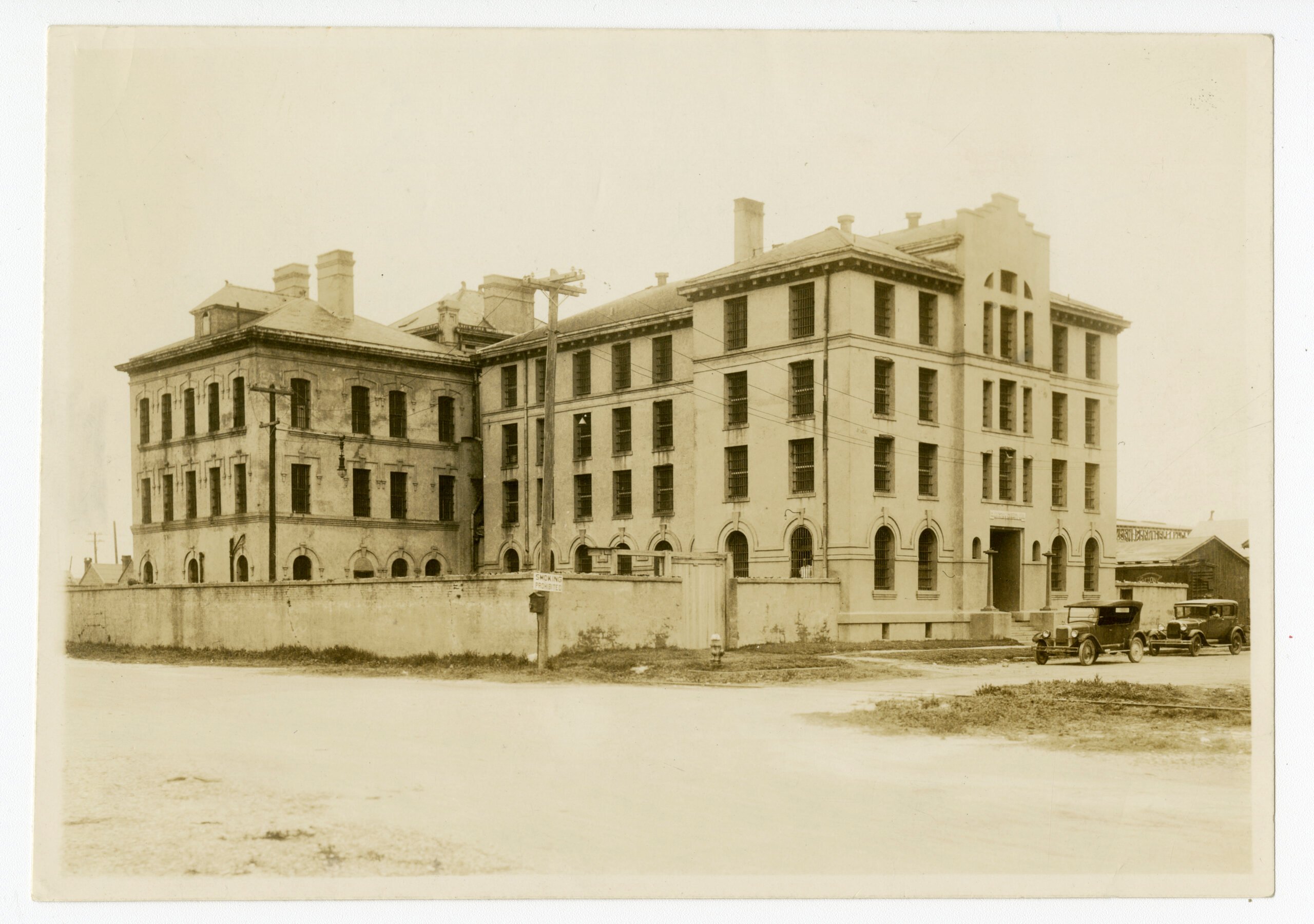Superfun with Superfund
A scenic tour of Harris County's 11 best toxic attractions.
Houston is known for so many things: opera, oil, obesity. But one of its distinguishing characteristics has passed almost unnoticed: Harris County’s 11 Superfund sites. A Superfund site is a toxic waste dump so malignant that the Environmental Protection Agency has made its cleanup a national priority. The most any other county in Texas can boast is three sites.
The sites have remained little known except to Houston’s poorest residents, who, thanks to the city’s lack of zoning, often live nearby. Some residents don’t even have this consolation, living unaware of the Superfund site adjacent to their neighborhood because warning signs are few and the city fails to widely publicize site locations.
In the interest of letting all Texans in on Houston’s dirty little secret, the Observer has created this handy guide to the Superfund sites of Harris County. Since there are so many, those who might want to follow in our footsteps should dedicate a weekend, but be advised, this tour can be hazardous to your health.

1. Geneva Industries
Located at 9334 Canniff Road, the Geneva Industries site is convenient to Hobby Airport (less than 2 miles away). The 13.5-acre site is a mere jaunt down a one-lane, dead-end road jutting east from the access road to Interstate Highway 45. Before coming to the attention of the EPA in 1983, the site housed a series of failed refineries. Its three wastewater lagoons are gone, but there are still picturesque foothills that beg for picnicking. The hills are the product of a multilevel “containment cap” that embraces the area in a comforting hug and, allegedly, protects the city of South Houston’s drinking-water well, located 1,300 feet east of the site.
During the 1980s, the EPA removed a million gallons of poison water, 62,000 tons of contaminated soil, up to 1,000 buried drums of organic waste, and, for good measure, 8 cubic yards of bagged asbestos. What could possibly be left?
2. Sol Lyn
For those who prefer their Superfund sites with a more urban feel, Sol Lyn is a mere 15 minutes away. From Geneva, hop on I-45 North and take South Loop 610 West just past Almeda, behind the feeder road. Sol Lyn is surrounded by businesses, from a tire store to Carmen’s Boutique, a favorite local source for adult novelties. In the 1970s, Sol Lyn was a scrap metal and electrical transformer salvage and recycling facility. This explains its outstanding concentration of trichloroethylene, or TCE. The chemical is found in older electronics and is what makes the fumes from Wite-Out so addlingly delightful. TCE also causes brain damage, coma, and death in sufficient concentrations, but you can safely enjoy TCE in water with up to 5 parts per billion. At one point, Sol Lyn’s groundwater had a TCE enrichment of 790 parts per million. Presumedly the groundwater recovery and treatment system the EPA required reduced the TCE levels, but by how much is unknown.

The EPA pumped and treated 15.5 million gallons of groundwater between 1993 and 2000, when the agency shut down the system for-how to put this delicately-not working. Because the EPA so values the health of the 2,100 persons living within a mile of the Sol Lyn site, they’ve spent the last seven years preparing cost estimates, conducting “value engineering studies,” and exploring “institutional control alternatives.” After almost a decade of furious study, they reached the conclusion that it might be a good idea to begin another form of water treatment. That was set to begin this year, the clock on which is fast running out. Meanwhile, the affected groundwater continues to creep north, off-site, at a rate of up to 68 feet a year. So the bonus with a visit to Sol Lyn is that each time you return, there’s a lot more site to see.
3. Jones Road
To get to the Jones Road site requires more of a trek. Forty minutes northwest of Sol Lyn, it sits 3.6 miles down Jones Road off of 290 West. The site is a recent addition to Harris County’s Superfund catalog and stands as a testament to how easy it to create your own toxic legacy. Unlike other Superfund sites, Jones Road isn’t a fenced-up grassy knoll in a rundown neighborhood-it’s a strip mall! Surrounded by houses, businesses, schools, and churches, 11600 Jones Road was home to Bell Dry Cleaners until it was caught, in 2003, dumping dry-cleaning chemicals into storm drains. Dry-cleaning fluid contains tetrachloroethylene, or PCE, which causes esophageal, cervical, and lung cancer. The EPA is finalizing the design of a waterline that will provide noncarcinogenic water to the 231 affected wells in the area. Meanwhile, in all its multitasking glory, the agency is also conducting an investigation to determine the extent of contamination to the Chicot aquifer, which supplies drinking water to thousands through private supply wells in northwest Houston. So if you’re in the mood to shop, stock up on bottled water and head for Jones Road, where the consequences of one business’s gross negligence have yet to turn the area into a ghost town. While you’re there, don’t mention the pollution to the shop owners unless you want an awkward conversation. Most of them don’t know.
4. Crystal Chemical Co.
Twenty-five minutes south of Jones Road is the Crystal Chemical Co. site. Take 290 back eastward to the Sam Houston Tollway. Head south to Westpark Drive. Crystal Chemical Co. is home to something advertisers have promised for generations-a bug-free picnic. From 1968 to 1981, Crystal Chemical produced arsenic-based pesticides. When it abandoned the site in 1981, it generously left 99,000 gallons of arsenic trioxide in a storage tank, 600,000 gallons of wastewater in lovely ponds, and arsenic in everything from the soil to the groundwater. The 35-foot sand aquifer below the site had an impressive 600 parts per million of arsenic (the safe level is less than 30).
What remains is a 25-acre tract of beautiful grass and trees surrounded by a fence that, on the day I visited, had an open gate! The ponds are gone, but in spite of 20 years of effort, the EPA has yet to reduce the arsenic in the surface soil and water down to safe levels.

5. Many Diversified Interests Inc.
If America is a melting pot, then its foundry is Many Diversified Interests, located at 3617 Baer Street, at the intersection of US-59 and I-10. For 66 years, a metal-casting foundry operated here, smack in the middle of Houston’s historic Fifth Ward, an old-style, impoverished, 98.9 percent-minority neighborhood downtown. When it went bankrupt in 1992, MDI was found to have enriched not only its own 36 acres with a variety of metals, particularly lead, but that it had spread its lead plume generously over the adjoining neighborhood. For humans, there is no safe level of lead, but the federal Centers for Disease Control and Prevention helpfully suggest that children avoid exposure to soil having a lead concentration of at least 500 milligrams per kilogram, lest they incur neurological and cognitive dysfunctions. Of the Fifth Ward homes surveyed, 34 percent had surface soils that met or exceeded this limit.
I’m sorry, let me restate. There was a foundry, and only after it closed did the company find it had caused a third of the homes near it to have soil that causes brain damage in children. Soil that causes brain damage. In children. A third of the yards. Your front yard. A third. Sixty-six years. The children-I’m sorry … I’m not … I’m not entirely sure what happened there.
Our tour. Let’s get back to our tour.
The EPA raked the top 6 inches of the front and backyards from 149 homes to remove the child-poisoning soil. A playwright heard about the community, visited, and staged a new work called Restricted Area about MDI at Bruce Elementary School, across the street from the site. In 1999 the city of Houston received a Superfund Redevelopment Initiative Grant for the site as part of an EPA pilot program. Houston received $100,000 to conduct a reuse assessment and “public outreach” to help determine how best to redevelop the property. The conclusion the city reached was to sell it, in May 2006, to Clinton Gregg Investments Ltd., for $7.89 million, and let that firm clean and redevelop it, essentially privatizing its recovery.
For now, the site is a fenced-off wasteland of dirt being pushed from place to place by men without face masks driving backhoes. Go see it before it becomes just another American success story.
6. North & 7. South Cavalcade
North and South Cavalcade are two sites separated by (wait for it) Cavalcade Street, and a mere 10 minutes north on US-59 from MDI, so you should plan to make a day of the three. They are guaranteed to make your own home and neighborhood, no matter where you live, seem lush, safe, and wealthy.
On the day that I visited, South Cavalcade was so bustling with industry that I didn’t recognize it as a Superfund site, and had to be directed to it by a man sitting in the road surrounded by trash. From 1910 to 1962, the 66 acres of South Cavalcade were used for wood preservation and creosoting. In 1983, the Houston Metropolitan Transit Authority investigated the site for potential use and found it contaminated with-creosote! Used for wood treatment, creosote is a mélange of chemicals to which long-term exposure to low levels can cause skin cancer and the underdiscussed cancer of the scrotum. Beazer East Inc., which owns the site, attempted to wash the polluted soils, but couldn’t get them down to non-scrotum-cancer-causing levels, so the company dropped a 6-inch, reinforced concrete cap on two contaminated areas and started using them for truck parking.

North Cavalcade poses a slightly stickier problem. Like South Cavalcade, North is enriched with creosote from a few decades of wood treatment, but unlike its sibling, it has yet to get its carcinogens consolidated. On-site, 22,000 cubic yards of unrecoverable soil sit in a containment facility, but 30 feet underneath, something creosotey called “dense non-aqueous phase liquid” is oozing deeper into the sands, overloading the groundwater pump-and-treat system installed in 1993. The waste has now migrated off-site, and the EPA is moving with its own tectonic haste to develop a remedy. I’m putting my money on a solution involving more barbed wire.
8. Sikes Disposal Pits & 9. French Limited
The French Limited Co., way out on Highway 90 in northeast Harris County, used the 185-acre Sikes Disposal Pits property to dump petroleum-based and chemical wastes in unlined sand pits from the early 1960s to 1967. Then the company purchased another 22.5-acre site, known as French Limited, to operate a commercial waste-disposal site. For two years, the company burned waste in an open pit and deposited about 300,000 cubic yards more in a lagoon. Area residents complained about the smell of unfiltered, burning waste to the Texas Water Pollution Control Board, and the bureaucracy sprang into action. In 1967, the Texas Water Development Board required French Limited to apply for a waste-control permit. After three years of negotiations, French Limited was granted a permit with special provisions, which it failed to meet. After extensive public hearings, the permit was canceled in 1971. Two years later, the state sued French Limited for noncompliance. For its troubles, the court deeded the state the disposal site in the settlement.
Now both Sikes Disposal Pits and French Limited have been cleaned up to the extent that they are no longer considered a danger to human health. In fact, a charming marina called Love’s Marina thrives on the Sikes site. Visitors are welcomed by a man named Big John, who likes pretty girls, and a flock of resident ducks with no more than the standard number of appendages. There is something unnerving about a fishing hole with an incinerator just over the ridge, but there is something beautiful about it, too. You really must see for yourself.

10. Highlands Acid Pit & 11. Patrick Bayou
Our last sites are two that, unfortunately, you can’t quite see for yourself. Patrick Bayou and Highlands Acid Pit are both inaccessible to tourists, but together they represent the past and future of Superfund in Harris County.
The Highlands Acid Pit, named for its proximity to Highlands 15 miles east of Houston on I-10, is a 6-acre peninsula bordered on three sides by the San Jacinto River. Industrial waste sludges, including hydrochloric acid, were dumped there during the ’50s, and the site flooded in 1961, possibly causing a fish kill in Clear Lake. So when time came for a list of places in Texas to clean up, Highlands Acid Pit made the list. Its top 8 feet were excavated and whisked away, backfilled and graded, seeded and fenced. So even if you could visit, you would see the Superfund ideal: a green, grassy glade of nothing, with the toxics buried and hidden.
But Superfund does not exist only to truck away the sins of Harris County’s unenlightened industrial past. Patrick Bayou is a Superfund site so new that almost no information is available about it. Nestled in a small inlet of the Houston Ship Channel off Highway 224 is a 3-mile tidal bayou bounded entirely by petrochemical facilities belonging to Occidental Chemical Corp., Royal Dutch Shell, and Lubrizol Corp. Previous investigations have confirmed the presence of toxic chemicals, but published reports don’t say how much, nor have the toxins’ origins been determined. The health and environmental consequences of this toxic soup has yet to be determined. Naturally, a course of action is also yet forthcoming. But never fear. The EPA is on the case. And it should have some of this information soon; after all, the site joined the Superfund National Priorities List in 2002.
Emily DePrang is a writer from Pearland, Texas.


